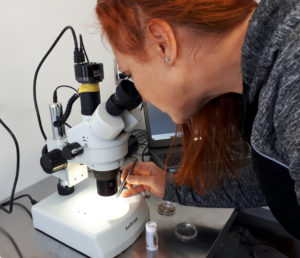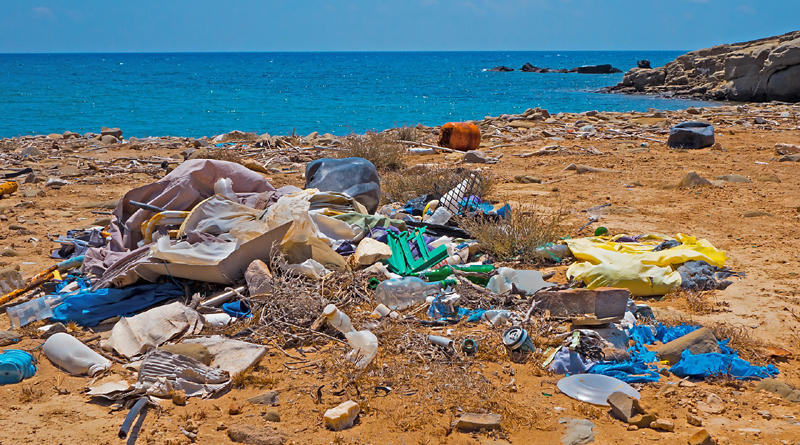PLASTIC WASTE, SCIENCE & TOURISM
When you take a trip it’s good to feel that you are also making a contribution, and that’s something I got with One Ocean Expeditions.
From their early days, One Ocean Expeditions has supported scientists by taking them to the remote regions their ships visit. If this had been paid for independently, chartering a ship specifically for the research, it would have been prohibitively expensive and much of the science simply would not have happened.
But my One Ocean Expeditions trip wasn’t just about the scientists; my fellow passengers and I passengers played our part. By having scientists on board alongside the ‘tourists’, passengers are informed and inspired by the research and able to engage with it on a deeper level.

On the RCGS Resolute, I travelled along the Atlantic Coast of Canada from Cape Breton to Sable Island, northwest to Prince Edward Island and The Magdalen Islands, further north and east to Newfoundland’s Woody Point and finally to French-owned St Pierre et Miquelon. All places that can be tricky to get to without a boat.
And while our ship wound her way along the coast, the on-board lab was open – for both professional scientists and we amateur citizen scientists.
One of the key areas where One Ocean Expeditions has helped facilitate study is around microplastics in our oceans.
Plastics are not natural – they are entirely man-made and first appeared in 1920s. Plastic takes at least 400 years to break up, but that’s not the end of it. Plastic simply doesn’t biodegrade – it just breaks up into smaller and smaller and smaller pieces… micro plastics. And that’s the real problem.

These pieces of plastic, some reasonably large, others so small they can’t be seen with the naked eye, find their way into our rivers and eventually into our oceans. There they float around, breaking up into even smaller pieces, and are eaten by the marine animals.
Tiny krill ingest miniscule particles that fill their stomachs and can’t be excreted, then fish and whales eat the krill. But because the krill has plastic in its stomach the nutritional value of the meal is much lower, causing deficiencies in the animals eating it – ultimately making them weaker.
In addition, as they digest the organic material of their dinner, the plastic from the krill’s stomach stays caught in their gut and intestines. In the end the animal can feel full due to so much plastic and therefore doesn’t feed or can’t feed – and eventually dies of starvation.
So why doesn’t the plastic just pass through their system?
The answer is, either the particles are too big to pass into the bowel and out of the animal, or more often it is because they are jagged shapes with hard cutting edges that cut the animal internally and get stuck in the wound – so it can’t heal. This also contributes to the declining health of the animal and its eventual death.
We already know that microplastics are in our environment and are causing havoc, especially in our oceans, but what we don’t know is if these plastics are evenly dispersed at all depths. Are they concentrated near the surface or do they migrate down to sea floor? And this was to be the focus of research in partnership with Oceanwise, with RCGS Resolute, on its visits to various locations (sometimes within the same year, and sometimes just once a year) taking samples at different depths, and this research helping provide an understanding of the size of the problem.
But research on its own is not enough – actions have to be taken.
So, what can we do, as individuals?
- If you own a fleece; wash it less often. Fleeces are a major culprit. They release at least 2000 plastic microfibres every wash. These cannot currently be filtered out of the waste water and so ultimately end up in the ocean. By washing your fleeces less often you can cut down on the fibre release. Some washing machines can now be retro-fitted with micro-fibre filters – but the jury is still out on their effectiveness. However, inbuilt filters are being developed, so watch out for those in the years ahead.
- Stop using single-use plastic. Tricky I know, but even if you can cut your use by 50% today – that’s a great start, and then over the coming months perhaps you can cut it back a little further and little further still… It all helps.
- Choose cosmetics that do not contain micro-beads. These are minute plastic particles that are used as fillers in products like toothpaste. Although the EU has proposed a ban on microplastics this has yet to be enacted, and companies will still be able to use them outside the scope of the ban. So, check what you are buying. If necessary, contact the company and ask them what they are doing. Being questioned by consumers can really help prompt a company to take action.
- If you do have to use plastic – then ensure you send it to be recycled. Every local authority has a different way to deal with plastic recycling, so check your local authority website or contact them and ask what you need to do ensure your plastic doesn’t end up in landfill.
- And very importantly, before you put the plastic in the recycling container – wash it thoroughly. Unfortunately, large quantities of the plastic collected for recycling is contaminated with food waste, which makes it recycle-proof. It has to go to landfill (or the equivalent). So, washing it is important.
What about the future?
Very slowly the large plastic users of the world are shifting. For example, CocaCola, has agreed to start changing the way their plastic bottles are made; Sprite bottles will become clear (as that is easier to recycle than green plastic) and more of their bottles will contain recycled PET.
There is also considerable research into creating plastics made of natural materials that will biodegrade. We’re seeing some early iterations of this in compostable bags for magazines and even for collecting home kitchen waste.
There is the movement away from single use plastics, like straws, plastic bags and Q-tips. For example, on a One Ocean voyage you won’t find a single plastic straw. And supermarkets in the UK now charge for a carrier bag – a move that has reduced plastic bag use by 90%. And companies like Superdrug are making their Q-tips with paper stems. These are all small steps – but they are also important. They mark the start of a shift away from single-use plastic, and as consumers we need to embrace that and ask companies to do even more, supporting those businesses that are taking action.
We won’t solve the plastic problem overnight – but we can all take steps to stop it getting any worse. We can also get involved in citizen science projects, like those carried out on One Ocean Expedition’s RCGS Resolute, projects which help to broaden our understanding and knowledge of the issues, the solutions and the actions needed.
NOTE (2020): Sadly One Ocean are no longer sailing but the issue of plastics remains ever present.
FACT BOX
One Ocean Expeditions https://www.oneoceanexpeditions.com/
Sable Island Parks Canada https://www.pc.gc.ca/en/pn-np/ns/sable
OceanWise: https://www.oceanwise.eu/
Cape Breton Island: www.cbisland.com
Canada: https://uk-keepexploring.canada.travel/
Nova Scotia: https://www.novascotia.com/
 ABOUT THE AUTHOR
ABOUT THE AUTHOR
Chantal Cooke is an award-winning journalist and broadcaster and co-founder of PASSION for the PLANET. Chantal is passionate about tourism being used as a force for good. You can follow her adventures on Facebook and Twitter @chantalcooke and on Instagram @Chantaldcooke
REFERENCES
https://www.independent.co.uk/news/uk/politics/plastic-bag-charge-supermarkets-figures-reduction-a9029996.html
https://www.packagingnews.co.uk/news/coca-cola-maps-bold-strategy-reycled-pet-18-06-2019
https://www.theguardian.com/environment/2016/jun/20/microfibers-plastic-pollution-oceans-patagonia-synthetic-clothes-microbeads

